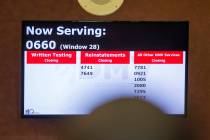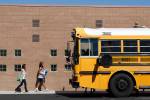COMMENTARY:
Education policy geeks are perpetually trying to figure out how to move the needle on academic achievement, yet they rarely include parents in the complex calculus of getting children to succeed in school.
In many cases, teachers and school staff are just thankful that students have parents and intact families they can rely on. At least on this point, Latino students — who currently make up roughly 1 in 4 of all children in the United States — have a leg up.
A new data analysis from the National Research Center on Hispanic Children &Families has found that “most low-income Latino and white children lived in two-parent households at the beginning of kindergarten (69 percent and 62 percent, respectively), mainly with biological or adoptive parents.”
This is a particular bright spot for Hispanic kids who have few advantages to boast of, especially considering that nearly all recent social-science research has found that non-two-parent households are a major determinant of how well children will do in life.
However, the same report found that, though Latino children are in more supportive family environments, this doesn’t exactly translate into tangible gains.
The research found that lower-income Hispanic children’s parents had lower educational attainment levels than their white or black peers, which likely helps fuel achievement gaps that put Latino children behind their white and black classmates in reading, and behind their white peers in math. This disparity persisted into third grade.
It’s true that there are programs, in limited geographical locations and mostly in the pilot stage, aimed at providing young families with interventions to help low-income kids arrive at preschool closer to their classmates’ level in early literacy and numeracy skills.
The problem is that such programs are often too cost-prohibitive to make a dent in the academic performance of whole populations — and increased parental involvement in a child’s education is only one small aspect of what it takes to get families to be able to make a real difference.
Another important piece of the puzzle is perception.
Nine out of 10 parents “believe their child performs at or above grade level in math and reading,” according to a recent survey conducted by the nonprofit organization Learning Heroes. Unfortunately, data from the National Assessment of Educational Progress shows that only about a third of students actually perform at grade level.
Meanwhile, 77 percent of parents surveyed by Learning Heroes believed “their children are getting a good education, and 66 percent say they are doing above-average academically,” even though this, also, is far too sunny an outlook.
And this attitude also tracks to other studies in which parents have said they believe that national public education is underperforming but their own local schools are doing a great job.
All of these data points are actually positive indicators of parents’ engagement and just go to show that even some of the most vulnerable families have real assets to pass on to their kids — not the least of which are stable homes, the valuing of education and positive attitudes toward both children’s potential and the efficacy of the system entrusted with educating their kids.
If we, as a nation, want to improve our students’ academic achievement, why aren’t we mining this precious resource?
If we could just commit to finding a way to harness all of parents’ positive energy in a way that could empower them to be their child’s first and most important teacher from birth — and then their most strident advocate when school starts — we could have an education revolution on our hands.
Contact Esther Cepeda at estherjcepeda@washpost.com.




























